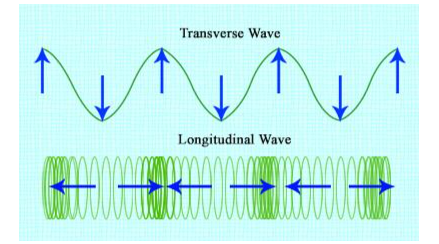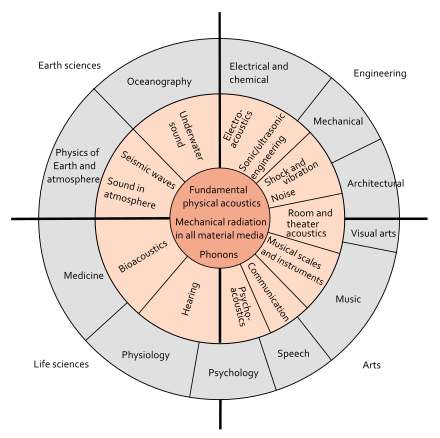Introduction
Acoustics is a branch of physics that deals with the study of sound, including its generation, transmission, and effects. It encompasses a variety of topics, including mechanical waves in different mediums and the study of various sounds such as vibrations, noises, ultrasounds, and infrasounds. There are various sub-disciplines of acoustics, including aeroacoustics, bioacoustics, and the acoustics of vibration. Acoustics has many technological and scientific applications and is a broad field that extends far beyond just the study of sound.
What is Acoustics?
The field of acoustics involves the study of sounds, their properties and how they interact with the environment. This includes exploring different types of sound waves, such as infrasonic and ultrasonic, and examining their behaviors and effects.
Acoustic Physics
An understanding of mechanical waves is crucial before understanding what acoustics is about. This is because sound itself is a mechanical wave. Broadly, all mechanical waves are classified into two categories:
- Longitudinal waves
- Transverse waves

.
Transverse and longitudinal waves
Sound Acoustics
In acoustics, we examine the transfer of energy through sound waves in a medium and how it interacts with its surroundings. Sound is a type of energy that travels as longitudinal waves through compression and rarefaction. Key attributes of sound waves include amplitude, frequency, wavelength, and velocity. The field of sound acoustics delves into the production and propagation of sound waves in a material.
Acoustic energy
The energy used to transmit vibrations from a source to a recipient using acoustic waves is referred to as acoustic energy. This energy was discovered in the sixth century during an experiment studying the characteristics of vibrating strings.
Noise
In our daily lives, we encounter different types of sounds with varying levels of loudness and frequency. The term “noise” refers to a loud, disturbing sound that can be uncomfortable to the ears. Noise can cause discomfort and annoyance to both individuals and their surroundings.
Importance of Acoustics
In our daily life, sound plays an important role and is present in every aspect of our existence. Hearing and producing sound is crucial for our survival and sets humans apart as the most advanced species on Earth with their ability to communicate through speech. Even beyond speaking and hearing, we humans have harnessed the knowledge of sound waves and found various uses for it in industries such as music, architecture, technology, and medicine. Hence, the study of sound, or in other words, acoustics, holds great significance as it has a broad range of applications in multiple domains.

The applications of acoustics
Application of acoustics
Acoustics is an area of science that has numerous practical applications, some of which include:
- Medicine: Ultrasonography and other high-frequency sound-based diagnostic techniques are crucial to our medicinal processes. Sound waves are also used to treat various psychological and physical disorders.
- Controlling noise pollution: Understanding sound sources is crucial in developing methods to reduce negative effects of sound in the form of noise.
- SONAR: SONAR technology uses sound waves to locate underwater objects and determine the sea’s depth.
- Acoustic warfare: SONAR is also being utilised for target identification and location in combat.
- Music: Acoustics play a vital role in producing and synthesising musical instruments, setting up orchestras, and in producing sound tracks, etc.
- Acoustic signal processing: This involves electronic modification of sound and is used in hearing aids, noise-cancelling devices, and other processes like perceptual coding.
Summary
The field of acoustics in physics focuses on the study of mechanical waves, particularly sound waves, and their various applications. It is a constantly evolving discipline and is being researched across multiple areas. Acoustics play a role in almost every aspect of human culture and over time, our understanding of the topic has continued to grow, leading to advancements in the technologies that are available to us. The increasing popularity and applicability of acoustics in various fields is also generating new job opportunities for acousticians and acoustic engineers globally.
Frequently Asked Questions
1. What is acoustics?
Acoustics, as a field of study, encompasses the investigation of sound, from its production to its propagation and eventual effects. It encompasses a range of subfields, including aeroacoustics, environmental acoustics, ultrasonics, and more.
2. What is SONAR?
SONAR is a technique that uses sound waves to locate and communicate with underwater objects. It stands for Sound Navigation and Ranging and is used to determine the position and distance of objects below the surface of the sea.
3. What are mechanical waves?
A mechanical wave is a type of wave that requires a medium to propagate through space, and sound waves are the most commonly known form of mechanical waves.
4. Why are sound waves considered mechanical waves?
Sound waves require a medium to travel through and thus, they are classified as mechanical waves.